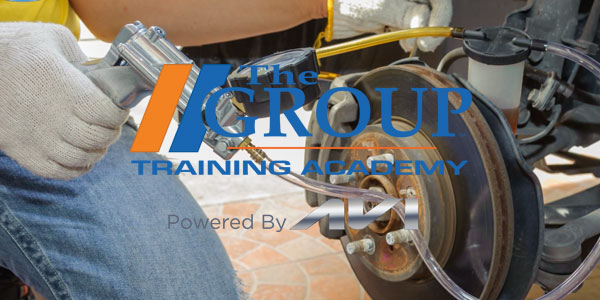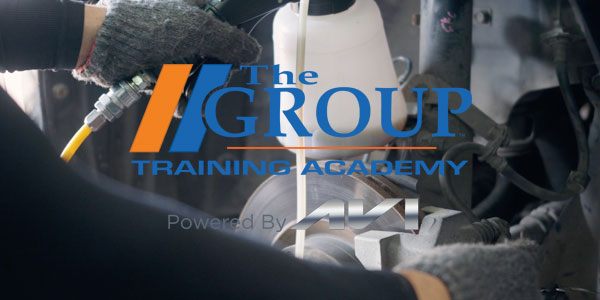By Andrew Markel
Editor, Brake & Front End
When you compare rotors side-by-side, they may look the same. But, the difference between a comeback and satisfied customer might be at the microscopic level.
Just about every rotor is made of cast iron. But what can make or break a rotor are ingredients like carbon, chromium silica and pearlite. Also, how a rotor is cast and cooled can determine its final properties. This is called the science of metallurgy.
Ensuring that a rotor has the right metallurgy costs the manufacturer time and money. It is not that the raw material costs more, it is that the manufacturing process may require more expensive equipment. Also, increasing energy costs and labor costs may be higher.
You may be saying, “iron is iron.” This is not true when it comes to brake rotors. OEMs use different grades of iron to ensure that a vehicle platform has the right characteristics of wear, noise dampening and performance. Like brake pads, rotors can be vehicle specific.
Taking a chance with some “cheap,” “economy” or “inexpensive” rotors that do not use the right grade of iron or manufacturing process could end up in a comeback.
Microstructures
Talk to any metallurgist or materials engineer and they will inevitably mention microstructures. What they are talking about is how the atoms and molecules bond or connect with each other to form small cohesive structures.
Think of these microstructures as a tiny racecar roll cage. A strong roll cage joins to the chassis at many points and the bars intersect at many joints. However, a weak roll cage will have fewer bars and joints. The stronger roll cage is able to resist being torn apart because it has more connections and stronger bonds. Also, a well-designed roll cage can influence the overall performance of the vehicle.
The same can be said about the cast iron mix that makes up a rotor. How the iron interacts with other elements like graphite (a form of carbon), silica and other materials can influence the microstructure of the iron and influence the final product. These microstructures can influence properties like wear, coefficient of friction and noise control.
Metallurgists can fine-tune the mix of iron and element to give a rotor the right characteristics for a vehicle. If more graphite is added to a mix, it can improve the noise damping properties of the rotor. But, the increased graphite content can lower the rotor’s resistance to wear and abrasion. If the wear characteristics need to be improved, a substance called pearlite can be added to the mix.
Achieving the best performance of the rotor is a balancing act. Adding too much of a component can ultimately affect the rotor’s ability to generate friction and dissipate heat.
Stress and Heat
Casting rotors can stress them out. Going from cold raw material to a hot liquid, then cooling into a new shape causes stress in the raw casting.
The microstructure of the rotor contracts as it cools. If one area of the rotor cools faster then an adjoining area, stress is created between the two areas due to the different rates of contraction. As you can imagine, rotors with large hats or a large swept area have areas that cool at different rates.
This stress can influence the performance of the rotor under heat and mechanical forces. This includes warping and mechanical failure. In other words, this stress could cause you the stress of a comeback in some cases.
To avoid these problems for some applications, a reputable rotor manufacturer will perform a process called stress relieving. It is a process where the fresh cast rotor is kept at a constant temperature for a certain length of time. Stress relieving is typically performed in the temperature range of 500 degrees C and 650 degrees C for periods up to 24 hours. This can cost a brake rotor manufacturer time and energy costs.
Stress relieving of cast iron rotors can be performed to minimize rotor warping or thickness variation that can occur under extreme service conditions. Stress relieving has no effect on microstructure. While it may not be required for every aftermarket rotor, for some applications it is critical.
Cryogenically Treated Rotors
One way to make sure the metallurgy of a rotor is the best it can be is to cryogenically treat the rotor after it has been manufactured. Cryogenic processing involves placing rotors in special refrigeration equipment that takes the parts down to the temperature of liquid nitrogen — minus 300° F below zero! At such extremely cold temperatures, a lot of really “cool” things happen. Atoms stop shaking around and settle down into a more relaxed state. This helps relax residual stresses in the metal for improved fatigue resistance, tensile strength, abrasion resistance and hardness.
In steel alloys, it can actually change the microstructure of the metal itself. Cast iron contains more carbon than steel, so the microstructure does not change as dramatically.
Even so, when done properly, a cryogenically treated rotor will run cooler (some claim up to 40 percent cooler!), last longer (two to four times longer), and resist warping and cracking better than any untreated rotor. The process can be applied to stock OE rotors, aftermarket rotors, or drilled or slotted rotors, and it treats the part all the way through, not just the surface.











